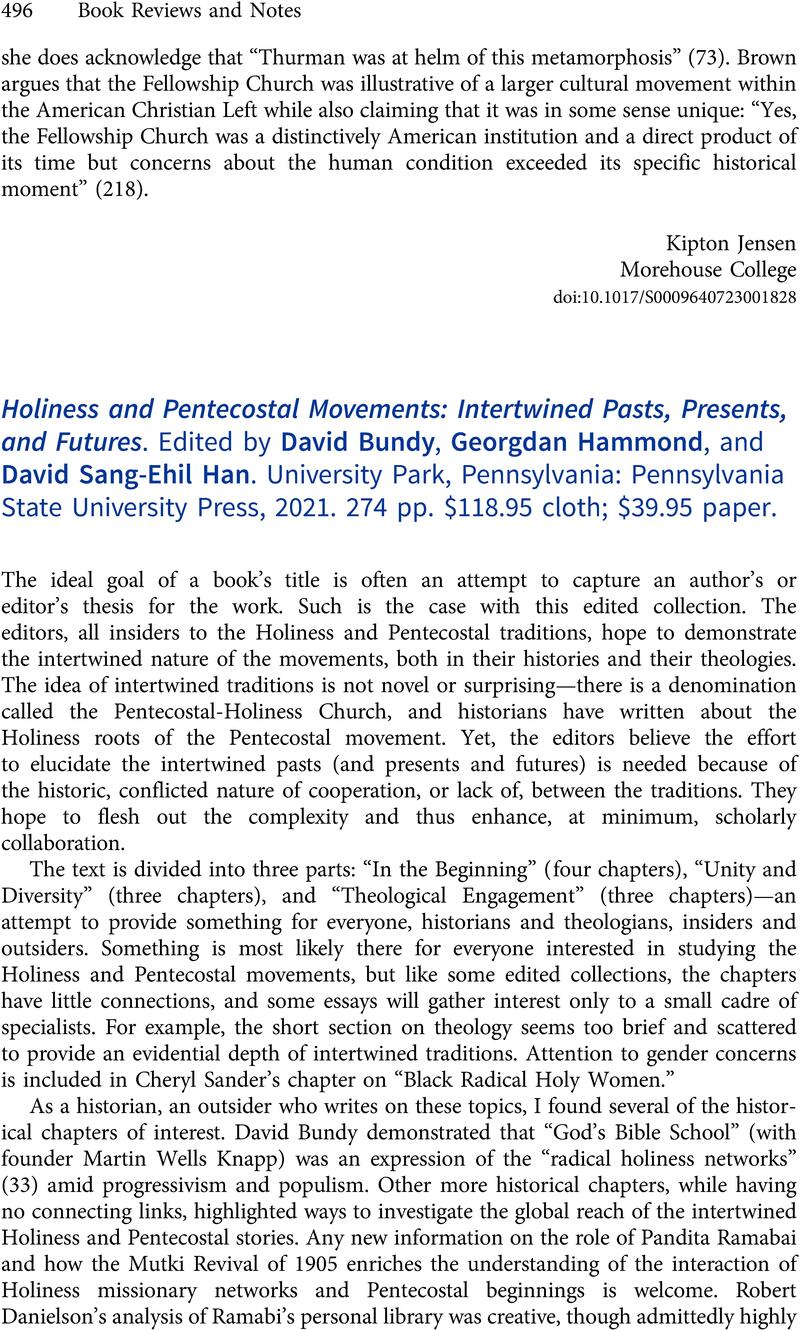No CrossRef data available.
Article contents
Holiness and Pentecostal Movements: Intertwined Pasts, Presents, and Futures. Edited by David Bundy, Georgdan Hammond, and David Sang-Ehil Han. University Park, Pennsylvania: Pennsylvania State University Press, 2021. 274 pp. $118.95 cloth; $39.95 paper.
Review products
Holiness and Pentecostal Movements: Intertwined Pasts, Presents, and Futures. Edited by David Bundy, Georgdan Hammond, and David Sang-Ehil Han. University Park, Pennsylvania: Pennsylvania State University Press, 2021. 274 pp. $118.95 cloth; $39.95 paper.
Published online by Cambridge University Press: 02 October 2023
Abstract
An abstract is not available for this content so a preview has been provided. Please use the Get access link above for information on how to access this content.

- Type
- Book Reviews and Notes
- Information
- Copyright
- Copyright © The Author(s), 2023. Published by Cambridge University Press on behalf of American Society of Church History


